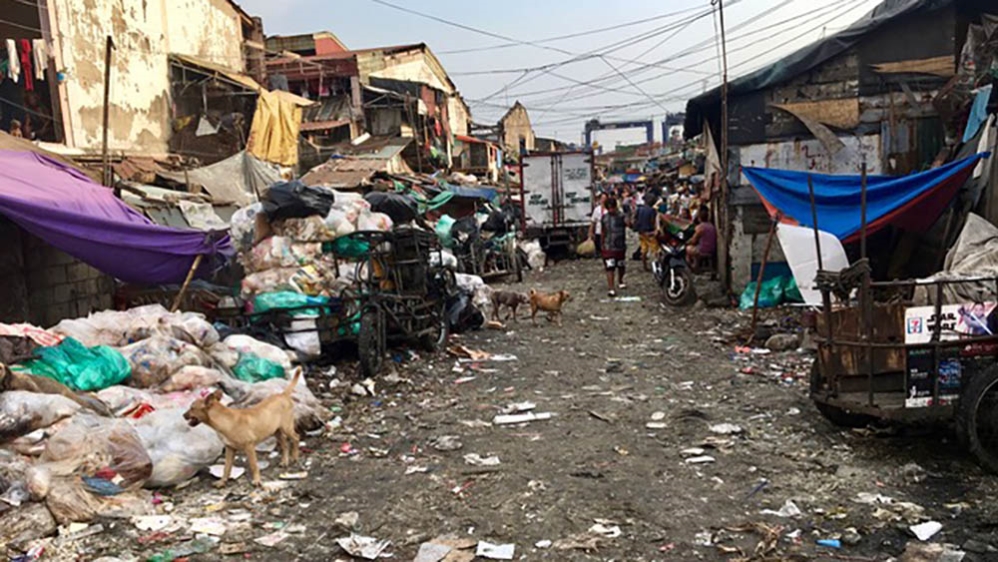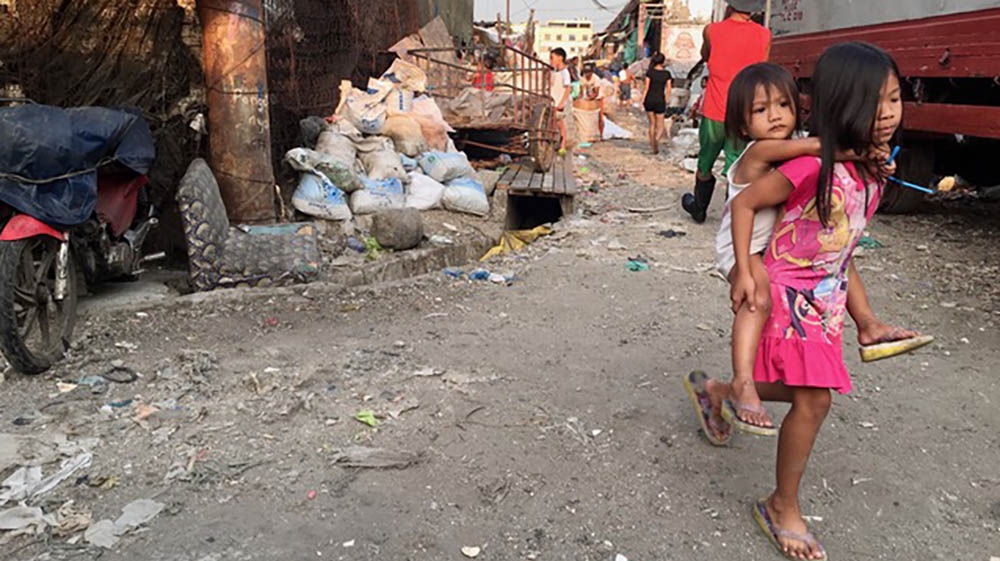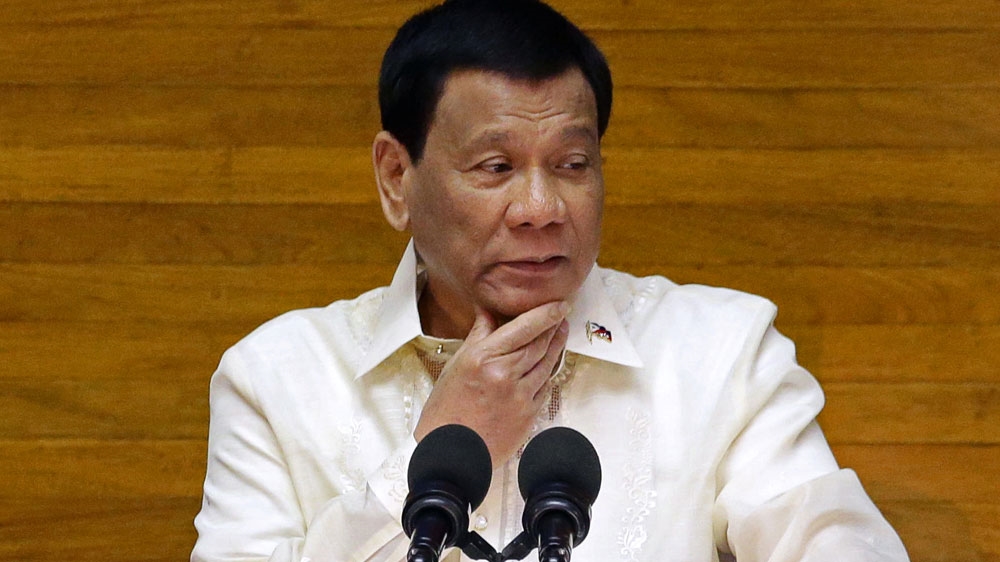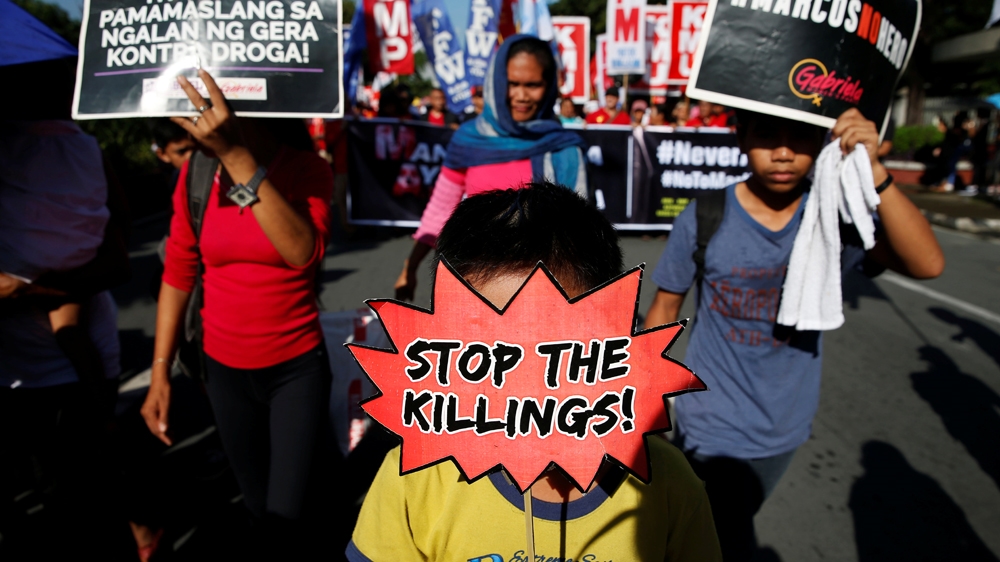Why are children going hungry as the Philippine economy grows?
Manila, Philippines – In Tondo, Manila’s largest slum, children root around in the garbage, looking for old chicken to boil and eat.
Life in Tondo, an area more than 100,000 call home, centres around a dump where families make what they can by sorting through the rubbish to find anything to sell.
Twice a week, a colourful truck approaches the children. On those two days, they know they’re going to be able to enjoy a fresh, hot meal.
As young as three, they run around the staff from Bahay Tuluyan, a non-profit organisation that brings food to the slum and other impoverished areas.
Some of the children help carry the large vats of food to a concrete room, where they wait impatiently for staff to set up.
They’re anxious for a meal, having faced the daily realities of hunger.
The malnutrition problem is massive. We have seen some kids very malnourished, and we continue to see that.
Catherine Scerri, deputy director of Bahay Tuluyan
Many belong to the more than 33 percent of Filipino children who suffer from malnutrition and associated complications such as stunting.
“The malnutrition problem is massive,” says Catherine Scerri, deputy director of Bahay Tuluyan. “We have seen some kids very malnourished, and we continue to see that.”
In Manila’s financial district just a few miles away, glittering skyscrapers are being built at a breakneck pace. They’re emblematic of the Philippines’ soaring economy, which grew by nearly seven percent in 2017.
And despite the fact that stunting and malnutrition are reported to cost the Philippines 326bn pisos ($6bn) each year – or about three percent of the nation’s GDP – the government’s eyes are elsewhere.
 |
| Thousands have built homes in a garbage dump in Tondo, Manila’s largest slum, where they make a living scavenging recyclables to resell [Anne Bouleanu/Al Jazeera] |
President Rodrigo Duterte has turned his focus to waging a war on drugs in the poorest areas of Manila, a campaign Human Rights Watch sayshas killed at least 12,000 people.
The poor are the most targeted, and in areas like Tondo, the sound of a motorcycle sends children running as they fear police officers may be coming to arrest or kill someone they know.
Save the Children found an overall reduction in malnutrition rates across Asia. In contrast, malnutrition rates continue to rise in the Philippines.
Bahay Tuluyan is trying to keep up with the crisis to support the growing number of street children orphaned by the drugs war and facing hunger.
It provides temporary housing for homeless youth, delivers meals for those in the city’s slums, invites children to shower at their facilities and offers community support for young people at risk in the city.
 |
| A child plays with neighbourhood dogs in Tondo before eating a hot meal provided by Bahay Tuluyan. For many children, this will be their only full meal of the day [Anne Bouleanu/Al Jazeera] |
Gani Damil, 17, has suffered as a direct result of the drug war. He has not seen his mother in years, and his father and brother were arrested and imprisoned on drug charges in 2016.
He was stranded on the streets when he came in contact with Bahay Tuluyan’s mobile food unit.
“It’s not okay,” Damil says of homelessness, hunger and living conditions, which over the years have included stays at Bahay Tuluyan’s shelter. “I’m not sure about the future … I want to help my family.”
Bowls of rice with chicken are the only full meals of the day for many of the dozens of children who flock to the food station.
They play and watch puppet shows staged by some staff members while others prepare the food, laying out brightly coloured plastic bowls.
 |
| A young girl carrying a toddler walks toward a community room where Bahay Tuluyan delivers hot meals for children each week [Anne Bouleanu/Al Jazeera] |
“For malnutrition to be reduced governments need to have a laser focus on it,” said Lawrence Haddad, executive director of the Geneva-based Global Alliance for Improved Nutrition.
“Every sector needs to be firing: health, agriculture, education, water, sanitation, women’s empowerment, poverty reduction, inequality reduction for significant progress to be made. Leadership from the very top is essential.
“The Duterte government has its priorities and I don’t see nutrition high among them.”
Late last month, President Duterte appeared to admit to extrajudicial killings in the drugs war.
In a speech at the presidential palace, he said: “What are my sins? Did I steal money? Even just one peso? Did I prosecute somebody I sent to jail? My only sin is extrajudicial killings.”
The reported extrajudicial activities of the current administration can create fear and close down public debate on how well the government is doing on any given issue, particularly on malnutrition.
Lawrence Haddad, executive director of Global Alliance for Improved Nutrition
Haddad said the killings and malnutrition could be linked.
“The reported extrajudicial activities of the current administration can create fear and close down public debate on how well the government is doing on any given issue, particularly on malnutrition,” he told Al Jazeera.
Al Jazeera contacted the Manila mayor’s office and city council for comment, but did not receive a response by time of publishing.
 |
| Philippine President Rodrigo Duterte’s war on drugs has killed thousands [Czar Dancel/Reuters] |
As children face hunger at increasing rates, the Duterte government is committing resources to drawing in international investors.
In the financial district of Makati, security guards stand at the mall entrance to inspect bags upon entry, but some believe they also serve another purpose – to keep the visibly poor out.
“There’s direct discrimination,” Bahay Tuluyan’s Scerri says. “It’s a private security guard with no accountability to anybody, so they can just arbitrarily keep that kind of clientele out of the mall.
“And in the most densely populated city on earth, we have a playground nearby that’s been turned into a car park … There’s nowhere for kids to go.”
 |
| People display placards during a protest against the government of President Rodrigo Duterte on anniversary of the 1972 Martial Law declaration in Manila, in Philippines, September 21, 2018 [Eloisa Lopez/Reuters] |
The government also gave broad support to creating Bonifacio Global City, a smoke-free, luxury development site within Manila that is home to universities, hospitals, pedestrian-friendly streets and acres of green space that provide a relief from Manila’s poor air quality.
The skyscrapers are eco-friendly, often designed by architecture firms from countries such as Denmark and the United States, and funded by investors the Duterte government is eager to attract.
In the first quarter of 2018, the Philippines brought in $2.2bn in foreign direct investment, an increase of 43.5 percent over the first quarter of 2017.
The Philippines continues to attract more investment, and foreign companies have proven eager to set up shop in Manila, building offices for financial institutions such as HSBC, Bank of America and Deutsche Bank.
Blocks away from the skyscrapers, children wander barefoot through the street selling sweets and trinkets to passersby, hoping to make a few pisos to buy food for the night.
“It’s not okay,” Gani Damil says again. But he spends his time looking toward the future, uncertain as it may be. Life will go on, he says, “come what may”.




